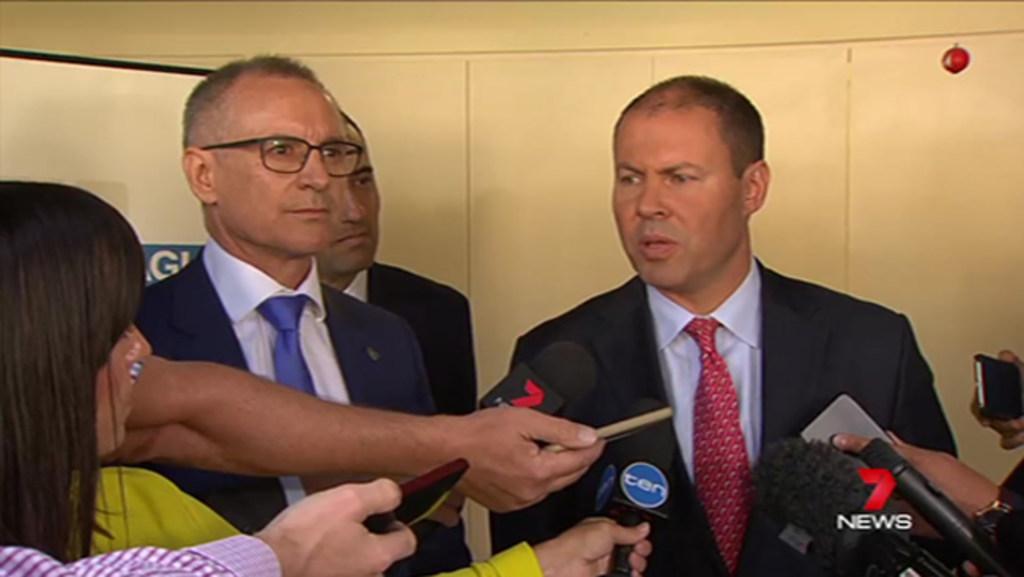Liberal leader Steven Marshall reveals his plan to solve the SA power crisis
HE’S repeatedly slammed the Weatherill government over SA’s power crisis — now Opposition Leader Steven Marshall says his solution involves turning voters’ houses into “mini power stations”.

- MEDIA MEET: Jay Weatherill attacks Energy Minister Josh Frydenber
- THOUGHT BUBBLES: What they were really thinking (probably)
- OPINION: Jay vs. Josh — and the winner is ...
- POWER BOOST: PM’s plan for Snowy River expansion
HOUSEHOLDS with roofs covered in solar panels should become their own “mini power stations” and help cut the risk of blackouts by reducing demand on the grid, Opposition Leader Steven Marshall says.
In the wake of Premier Jay Weatherill’s release of a $550 million power package that includes a taxpayer-owned, gas-fired power station, Mr Marshall has called for a focus on home solar batteries which could ease strain on the grid and avoid load shedding blackouts.
In an extended interview with The Advertiser on Thursday, Mr Marshall said “demand management” was the single biggest issue confronting the SA grid but totally absent from Labor’s plan.
“There are over 200,000 generators in SA, with rooftop PV. They’re all potential generators,” he said. “They can increase the stability of our grid and reduce the costs for consumers. Our policy will directly speak to people who have invested in generation capacity.”
Compared to other states and countries, SA has a uniquely large difference between its average daily power use, and that needed on very hot summer days when demand can triple.
Mr Marshall said measures that reduced the amount taken from the grid at those times would eliminate the need for expensive new power stations, as well as reduce consumer costs.
A total of 205,068 SA households have solar panels, and there has been a huge spike in installations since the statewide blackout, despite the removal of generous feed-in tariffs.
Mr Marshall said new rules for how power prices were charged could incentivise people to pair batteries to their existing solar systems, leaving more power in the grid for others when demand was high. The load-shedding of last month came as the state hit a new record-high demand in sweltering 42C heat, just as both wind and solar production collapsed and the sun set.
Mr Marshall said Labor’s plan was right to include battery storage, but it did not go far enough.
“There is no point in having intermittent renewable energy if you can’t use that energy when it’s actually needed. Storage always had to be part of the plan,” Mr Marshall said. “Where we think the Government has got this wrong is they’re only talking about grid-scale storage.”
SA households currently have only two pricing options for power — cheaper at night and more expensive in the day. Mr Marshall hinted at further reform to “create an incentive”.
“We want to improve the attractiveness of the storage opportunity at the household level,” he said. “It’s only a matter of time, these things (batteries) are coming down in cost all the time.”
At the last state election, the Liberals advocated smart meters to give households more power over when and how they use energy, as well as the ability to bring in more flexible pricing.
Currently, consumer website Choice models the payback on a Tesla Powerwall home battery as longer than its practical life. However, skyrocketing electricity bills and the insurance from possible future blackouts in SA are making the option increasingly appealing to many.
Mr Marshall said it was also critical to bring “certainty” for investment and the grid by abolishing the state-based renewable energy target and tying it to one set in Canberra.
There must also be measures to increase investment in grid-scale baseload, he said.
